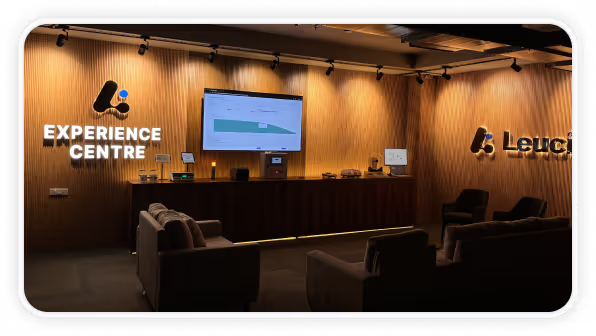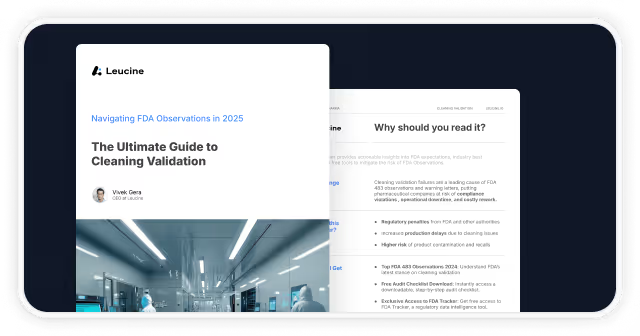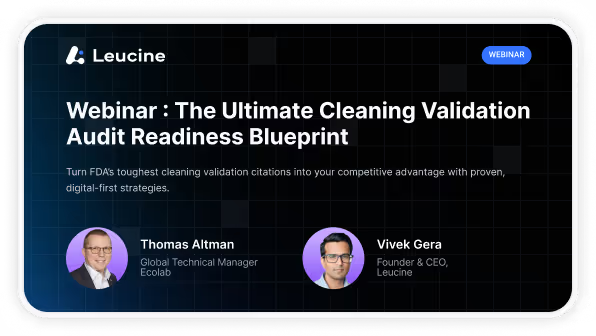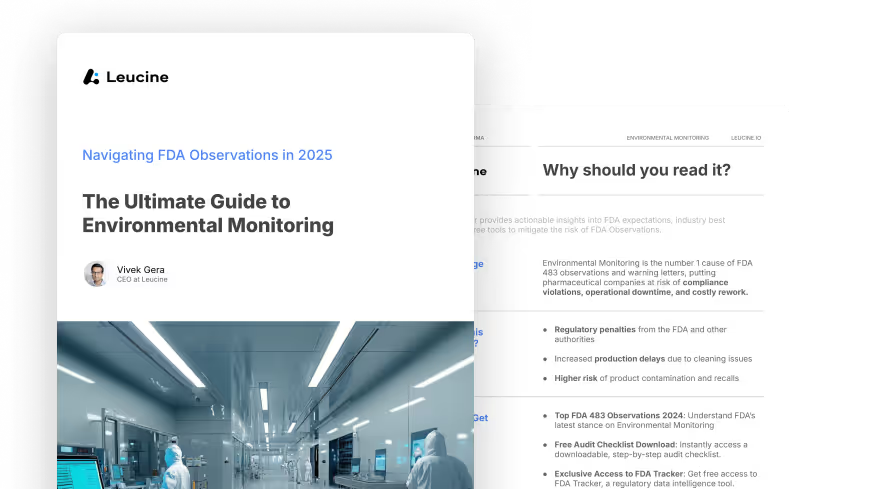The Rise of Real-Time EM: Why 2025 is the Year to Abandon Manual Environmental Monitoring
Discover why 2025 is the pivotal year to transition from manual to real-time environmental monitoring. Market insights, ROI analysis, and implementation strategies.
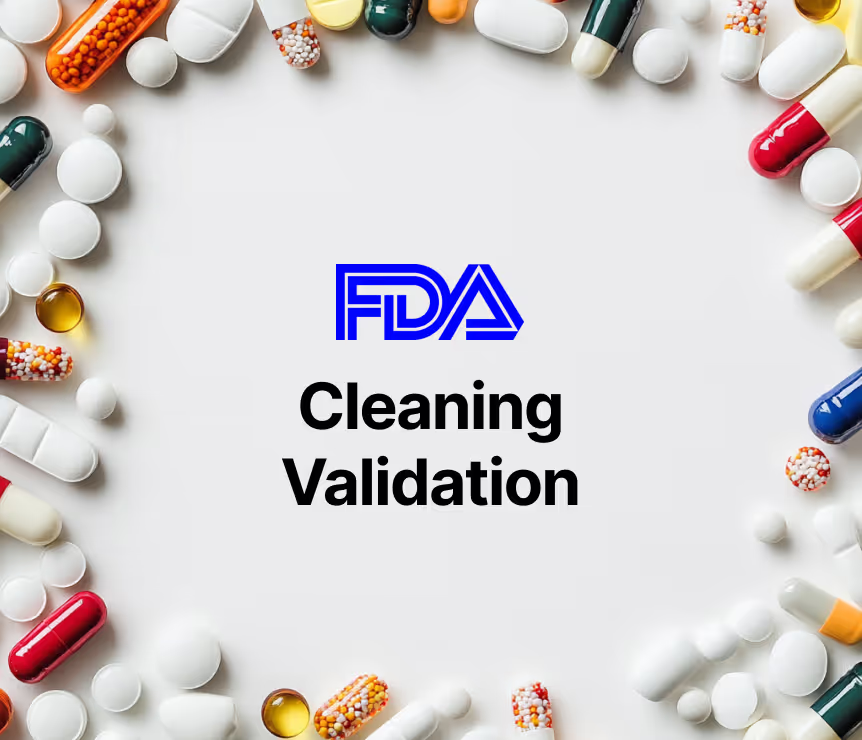
The writing is on the cleanroom wall: 2025 marks the definitive end of manual environmental monitoring in pharmaceutical manufacturing. What began as whispered conversations in quality meetings has exploded into a $22 billion global market opportunity by 2033, exhibiting a CAGR of about 12% during the forecast period of 2025-2033.
This isn't just market hype—it's an operational imperative driven by regulatory tightening, competitive pressure, and the undeniable proof that manual systems can no longer keep pace with modern pharmaceutical complexity.
The convergence of market forces has created a perfect storm: Integration of other innovations such as Internet of Things (IoT) and artificial intelligence (AI) are "transforming environmental monitoring by enabling real-time data collection and analysis, enhances accuracy, efficiency, and compliance", while regulatory agencies demand increasingly sophisticated contamination control strategies.
For pharmaceutical manufacturers still clinging to manual environmental monitoring, 2025 represents both an ultimatum and an opportunity.
The Market Forces Reshaping Environmental Monitoring
The numbers tell an unambiguous story. In 2024, Pharmaceutical Environmental Monitoring Market was valued at USD 2.5 billion and is anticipated to grow to USD 5.1 billion by 2033 at a CAGR of 8.7%. This isn't gradual evolution—it's rapid transformation driven by technological breakthroughs and regulatory necessity.
Three critical market drivers are accelerating this shift:
1. Regulatory Tightening Demands Real-Time Response
The FDA has been progressively tightening its regulations for microbial and particulate contamination in aseptic processing environments. In 2024, the FDA issued new guidelines recommending more frequent environmental monitoring in certain high-risk areas. These updates emphasize the importance of continuous environmental monitoring rather than periodic checks.
Manual systems simply cannot deliver the frequency, consistency, and immediate response capabilities these new regulations demand. As we documented in our analysis of why manual environmental monitoring is no longer sustainable, the regulatory landscape has fundamentally shifted beyond what clipboard-based systems can support.
2. Advanced Technology Integration Creates Competitive Advantage
Automation and robotics are seeing greater adoption for environmental monitoring, specifically to "streamline processes and reduce human error". The integration of IoT sensors, AI-powered analytics, and automation doesn't just improve accuracy—it creates operational advantages that translate directly to bottom-line impact.
Companies implementing real-time monitoring report:
- 60% reduction in contamination incidents
- 40% improvement in compliance rates
- 25% increase in reporting accuracy
- Dramatic reductions in investigation time and associated costs
3. The Aging Population Crisis Intensifies Quality Demands
According to the World Health Organization (WHO), the global population aged 60 years and older is expected to reach 2 billion by 2050, increasing the need for effective medications and the environments in which they are produced.
This demographic shift puts unprecedented pressure on pharmaceutical quality systems. As patient populations become more vulnerable and drug complexity increases, environmental monitoring programs must deliver reliability that manual systems simply cannot guarantee.
Real-Time EM Technology: Beyond Faster Results
Real-time environmental monitoring isn't simply about speed—it's about fundamentally changing how pharmaceutical facilities detect, respond to, and prevent contamination events. The technology stack driving this transformation includes several breakthrough capabilities.
IoT-Enabled Continuous Monitoring
Growing adoption of IoT-based monitoring systems: Integration with sensors, data loggers, and cloud platforms for remote monitoring and data analysis enables unprecedented visibility into environmental conditions.
Modern IoT sensors can:
- Monitor temperature, humidity, particulates, and microbial loads simultaneously
- Transmit data in real-time to centralized dashboards
- Automatically trigger alerts when conditions deviate from specifications
- Enable remote monitoring and data analysis from any location
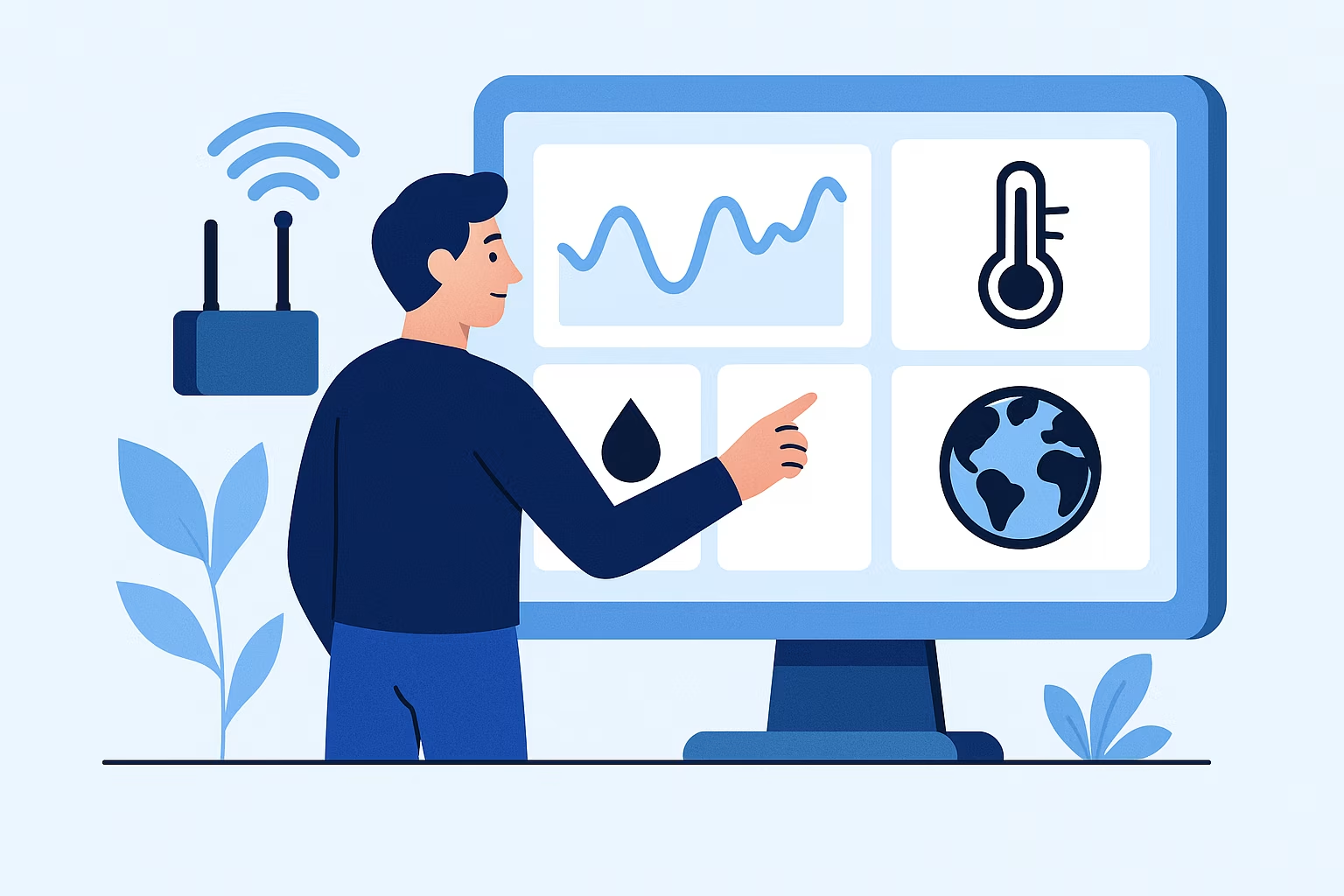
AI-Powered Predictive Analytics
The most advanced real-time EM systems now incorporate artificial intelligence to move beyond reactive monitoring to predictive contamination control. Technological advancements, including the integration of IoT sensors, AI-powered analytics, and automation, are improving the efficiency and accuracy of monitoring processes. This results in faster detection of contamination, reducing production downtime and improving product quality.
These AI capabilities include:
- Pattern recognition to identify contamination risks before they manifest
- Predictive maintenance alerts for HVAC and filtration systems
- Automated trend analysis that identifies subtle changes in environmental conditions
- Machine learning algorithms that continuously improve detection accuracy
Integrated Data Management Platforms
Real-time monitoring generates massive data volumes that manual systems cannot effectively manage. Software solutions play a crucial role in data management, analysis, and reporting, enhancing compliance and enabling proactive decision-making.
Modern platforms provide:
- Cloud-based data storage with instant access from any device
- Automated regulatory reporting and audit trail generation
- Advanced analytics dashboards for trend identification
- Integration with existing quality management systems
The Financial Case: ROI Analysis for Real-Time EM
While the regulatory and quality benefits of real-time environmental monitoring are clear, the financial justification often drives final adoption decisions. The investment case is increasingly compelling across multiple dimensions.
Direct Cost Savings
Real-time systems eliminate many of the hidden costs associated with manual monitoring:
- Labor Cost Reduction: Automated sampling and data collection can reduce EM-related labor by 40-60%
- Investigation Cost Elimination: Faster contamination detection prevents costly batch investigations and potential product loss
- Compliance Cost Avoidance: Automated documentation and reporting reduce audit preparation time by up to 75%
Risk Mitigation Value
The cost of contamination events far exceeds the investment in prevention systems:
- Batch Loss Prevention: A single batch loss can cost $500K-$5M+ depending on product complexity
- Regulatory Action Avoidance: FDA enforcement actions can cost $10M+ in remediation, legal fees, and lost revenue
- Reputation Protection: Product recalls and quality issues can impact stock price and market position for years
Operational Efficiency Gains
The adoption of microbial monitoring techniques has become increasingly sophisticated, utilizing automated systems that provide real-time data. As a result, pharmaceutical companies can respond promptly to any environmental deviations, thus safeguarding product integrity and compliance.
These efficiency gains compound over time:
- Faster batch release decisions through continuous monitoring
- Reduced equipment downtime through predictive maintenance
- Improved capacity utilization through optimized cleaning and maintenance schedules
Implementation Strategy: Your 2025 Transition Roadmap
Successfully transitioning from manual to real-time environmental monitoring requires strategic planning, phased implementation, and change management. Companies that approach this transformation systematically achieve better outcomes and faster ROI realization.
Phase 1: Assessment and Planning (Q1 2025)
Begin with a comprehensive assessment of your current EM program:
- Gap Analysis: Compare current capabilities against regulatory requirements and industry best practices
- Risk Assessment: Identify high-risk areas that would benefit most from real-time monitoring
- Technology Evaluation: Assess available solutions against your specific operational requirements
- ROI Modeling: Develop financial justification based on your facility's specific cost structure
Our comprehensive environmental monitoring guidelines provide a framework for evaluating your current state against global regulatory expectations.
Phase 2: Pilot Implementation (Q2 2025)
Start with a controlled pilot program in your highest-risk areas:
- Critical Zone Focus: Begin with Grade A/B areas where contamination risks are highest
- Parallel Operation: Run real-time systems alongside manual processes to validate performance
- Staff Training: Develop competency in new technologies and workflows
- Data Validation: Establish confidence in automated systems through comparison with historical data
Phase 3: Full Implementation (Q3-Q4 2025)
Scale successful pilot programs across your entire facility:
- Phased Rollout: Implement by zone or production line to manage complexity
- Integration Testing: Ensure seamless integration with existing quality management systems
- Documentation Update: Revise SOPs, training materials, and validation protocols
- Regulatory Preparation: Prepare documentation packages for regulatory review and approval
Overcoming Implementation Challenges
While the benefits of real-time environmental monitoring are clear, successful implementation requires addressing several common challenges that can derail transformation initiatives.
Technology Integration Complexity
Modern pharmaceutical facilities often operate with legacy systems that weren't designed for real-time integration. Based on the report by Verified Market Research, key challenges within the pharmaceutical and biotechnology environmental monitoring industry may include factors such as regulatory compliance... due to the higher expenses and resources requirement to meet complex and "ever-changing" standards.
Solution strategies include:
- Selecting systems with robust integration capabilities and open APIs
- Working with vendors who specialize in pharmaceutical environments
- Planning for data migration and system validation requirements
- Implementing in phases to manage technical complexity
Data Management Overwhelm
Another challenge mentioned in the report was how large volumes of monitoring data could be difficult to manage and analyse. As such, this could impact growth of the pharmaceutical and biotechnology environmental monitoring sector.
Effective data management requires:
- Cloud-based platforms that scale automatically with data volume
- AI-powered analytics that identify significant patterns automatically
- Automated reporting systems that generate regulatory-ready documentation
- Clear data governance policies and access controls
Change Management and Training
Transitioning from manual to automated systems requires significant cultural change. Teams must shift from reactive, schedule-based monitoring to proactive, data-driven contamination control.
Success factors include:
- Executive sponsorship and clear communication of business benefits
- Comprehensive training programs that build confidence with new technologies
- Gradual transition that allows teams to build competency over time
- Recognition and reward systems that encourage adoption of new practices
The Leucine Advantage: Proven Real-Time EM Implementation
At Leucine, we've guided over 300+ pharmaceutical facilities through the transition from manual to real-time environmental monitoring. Our AI-powered platform addresses the complete spectrum of EM requirements while ensuring seamless integration with existing operations.
Comprehensive Real-Time Monitoring Capabilities
The Leucine Environmental Monitoring System provides:
- Smart Sampling Plans: AI-driven scheduling ensures no sampling point is missed, with automated alerts for deviations
- Real-Time Data Collection: IoT sensors continuously monitor air quality, surface contamination, and personnel monitoring parameters
- Automated CFU Detection: Computer vision technology eliminates manual colony counting errors and standardizes results
- Predictive Analytics: Machine learning algorithms identify contamination risks before they impact production
Audit-Ready Compliance
Our platform ensures you're always prepared for regulatory inspections:
- 21 CFR Part 11 compliant electronic records and signatures
- Automated audit trail generation with tamper-proof documentation
- Real-time deviation alerts with guided investigation workflows
- Regulatory-ready reports for FDA, EMA, and WHO inspections
Companies implementing Leucine's solution report average ROI realization within 6-12 months, driven by reduced labor costs, faster deviation resolution, and improved compliance outcomes.
Schedule a Demo and discover how leading pharmaceutical companies are transforming their environmental monitoring programs with Leucine's real-time platform.
Industry Success Stories: Real-Time EM in Action
The pharmaceutical industry's transition to real-time environmental monitoring is already delivering measurable results across multiple facility types and operational contexts.
Case Study: Large-Scale Sterile Manufacturing
A major biologics manufacturer implemented real-time monitoring across their 150,000 sq ft facility, covering 12 Grade A/B suites and 25+ support areas. Results included:
- 68% reduction in contamination events within the first year
- 45% decrease in investigation time through automated data collection and analysis
- $2.3M annual savings from avoided batch losses and reduced labor costs
- 100% audit pass rate across three regulatory inspections
Case Study: Multi-Site Implementation
A global pharmaceutical company standardized real-time EM across 8 manufacturing sites in 5 countries. The unified approach delivered:
- Standardized best practices across all facilities through common technology platform
- Centralized monitoring enabling corporate oversight and rapid response to issues
- 25% improvement in overall equipment effectiveness through predictive maintenance alerts
- Reduced regulatory risk through consistent documentation and reporting standards
Case Study: Contract Manufacturing Organization
A leading CMO implemented real-time monitoring to differentiate their services and improve operational efficiency:
- 30% reduction in changeover time between different client products
- Improved client confidence through real-time data sharing and transparency
- Higher utilization rates due to faster batch release decisions
- New business wins based on advanced monitoring capabilities
Looking Forward: The Future of Environmental Monitoring
As we look beyond 2025, several emerging trends will continue to reshape environmental monitoring in pharmaceutical manufacturing. Understanding these developments helps companies make technology investments that remain relevant for years to come.
Advanced AI and Machine Learning
The next generation of environmental monitoring systems will leverage increasingly sophisticated AI capabilities:
- Predictive Contamination Modeling: AI systems that can predict contamination events days or weeks in advance
- Automated Root Cause Analysis: Machine learning algorithms that identify contamination sources and suggest corrective actions
- Adaptive Monitoring: Systems that automatically adjust sampling frequencies and parameters based on real-time risk assessment
Digital Twin Technology
Digital twins—virtual replicas of physical manufacturing environments—will enable unprecedented contamination control capabilities:
- Virtual testing of contamination control strategies before implementation
- Simulation-based training for personnel on contamination response procedures
- Optimization of airflow patterns and facility design for improved contamination control
Blockchain-Based Data Integrity
Blockchain technology will provide unalterable audit trails for environmental monitoring data:
- Tamper-proof documentation that exceeds current 21 CFR Part 11 requirements
- Automated compliance verification through smart contracts
- Enhanced data sharing with regulatory agencies while maintaining security
The 2025 Imperative: Act Now or Fall Behind
The convergence of regulatory pressure, technological advancement, and market forces has created a unique window of opportunity—and necessity—for pharmaceutical manufacturers to modernize their environmental monitoring programs.
Companies that delay this transition face mounting risks:
- Regulatory Non-Compliance: Manual systems increasingly cannot meet evolving FDA and EMA requirements
- Competitive Disadvantage: Facilities with real-time monitoring achieve better quality outcomes and operational efficiency
- Talent Challenges: Quality professionals increasingly expect to work with modern, digital systems
- Investment Risk: Continued investment in manual systems provides diminishing returns
Conversely, companies that act decisively in 2025 position themselves for sustained success:
- Market leadership through superior quality and compliance outcomes
- Operational advantages that compound over time
- Talent attraction and retention through modern work environments
- Investment protection through scalable, future-ready technology platforms
The question isn't whether to transition to real-time environmental monitoring—it's how quickly you can execute the transformation. Based on our experience with environmental audit preparation and regulatory compliance, facilities that begin planning in early 2025 can complete implementation before their next major inspection cycle.
Your Next Steps: From Planning to Implementation
Ready to begin your transition to real-time environmental monitoring? Success requires methodical planning and expert guidance. Here's how to get started:
Immediate Actions (Next 30 Days)
- Conduct a comprehensive assessment of your current EM program using our audit readiness checklist
- Benchmark your program against global environmental monitoring guidelines
- Identify high-priority areas for real-time monitoring implementation
- Develop preliminary ROI models based on your facility's specific cost structure
Strategic Planning (Next 60 Days)
- Evaluate technology platforms and vendor capabilities
- Develop detailed implementation timeline and resource requirements
- Create change management plan for staff transition
- Secure executive sponsorship and budget approval
Implementation Preparation (Next 90 Days)
- Select technology platform and implementation partner
- Begin pilot program planning and site preparation
- Initiate staff training and competency development
- Prepare regulatory filing and validation documentation
The pharmaceutical industry's transition to real-time environmental monitoring represents one of the most significant quality system transformations in recent decades. Companies that embrace this change in 2025 will define the new standard for contamination control and regulatory compliance.
Connect with Leucine's Environmental Monitoring Experts and discover how our proven platform can accelerate your transition to real-time monitoring.

